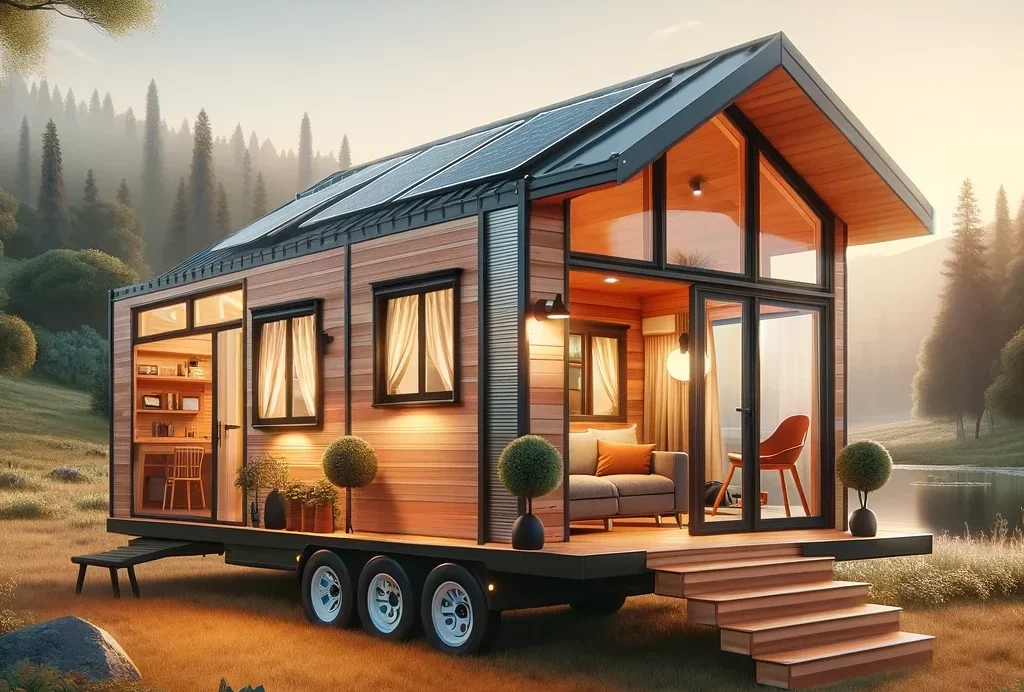Welcome, tiny home enthusiasts! Embarking on a tiny house on wheels adventure is exciting and a testament to your commitment to simpler, more intentional living. But before we start hammering away, it’s critical to understand the legal requirements. This guide, “10 Tips For Designing A Tiny Home On Wheels,” will help make your tiny home cosy, functional, and compliant with the law, ensuring your peace of mind and a smooth journey.
1. Local Zoning Laws Mastery
Begin your journey by thoroughly researching local zoning laws and regulations. Knowing the legal landscape is crucial to avoid roadblocks. Get familiar with property lines, building codes, and necessary permits to prevent costly mistakes and legal complications. This step is fundamental for a smooth building process.
2. Understanding Size and Weight Restrictions
Ensure your tiny home meets size and weight regulations to maintain a mobile lifestyle. Learn about your area’s legal requirements for a vehicle to be street-legal. This information will help you design a home that is both cozy and compliant, avoiding issues when you decide to travel.
3. The Perfect Trailer

Selecting the right trailer is like choosing the right foundation for a traditional home. Consider a dual-axle trailer for its superior stability and weight distribution. Verify the trailer’s weight capacity to ensure it can support your tiny house. A solid foundation will provide peace of mind as you build your dream home from the ground up.
4. Layout Visualization on the Beach
Transform your tiny house vision into a tangible plan by taking it to the beach. Outline your layout directly on the sand, simulating walls, doors, and furniture placements. Walking through your proposed design on the beach lets you make adjustments in real time, optimizing space and functionality in a serene setting before you start building. This method not only aids in spatial understanding but also brings a refreshing element to the planning phase.
5. Vertical Space Solutions – Stairs vs. Ladders
Maximize your tiny home’s footprint by thinking vertically. Choose between stairs and ladders based on your needs and space constraints. Stairs can double as storage units, offering a clever solution to clutter, while ladders keep your floor plan open and airy. Consider your mobility needs and daily routines when deciding which option best supports your lifestyle.
6. Intelligent Door Design
Plan the placement of your doors wisely to enhance your tiny home’s functionality and aesthetics. Consider factors like wind direction, privacy, and interior flow when deciding where to install entrances and exits. A well-thought-out door design can improve ventilation, natural light, and ease of movement, making your tiny space feel welcoming and efficient.
7. Weight Distribution Wisdom
Balance is key in a tiny house on wheels. Proper weight distribution is crucial for stability and safety on the road. Plan your interior layout so that heavy items are evenly dispersed throughout the trailer. This strategic approach prevents swaying and ensures a smoother ride, whether you’re traveling to a new destination or settling down in a scenic spot.
8. Sustainable Living Blueprint

Design your tiny house with sustainability in mind. Incorporate eco-friendly materials and technologies such as solar panels, composting toilets, and rainwater collection systems. These green choices can reduce your environmental footprint while promoting a self-sufficient lifestyle. Embracing sustainability not only benefits the planet but can also lead to significant savings on utility costs.
9. Future-proof Flexibility
Build your tiny home with the future in mind. Life can be unpredictable, so design your space to be adaptable to changing needs and circumstances. Modular furniture, convertible spaces, and multi-functional areas can accommodate different life stages and activities. Whether you’re planning for a growing family or considering accessibility for older age, flexibility is the key to a long-lasting tiny home.
10. Prudent Financial Planning
A successful tiny house project doesn’t end with construction. Consider the long-term financial implications of tiny living, from maintenance costs to utilities and insurance. Set aside a contingency fund to cover unexpected expenses. By planning your finances carefully, you can ensure that your tiny house remains a joy, not a burden, in the years to come.
Final Thoughts and Well Wishes
By following these principles, your tiny living journey becomes less overwhelming and more achievable. It’s about more than reducing your living space—it’s about increasing your freedom, mobility, and connection to the environment. Remember, the true value of this journey lies in its simplicity and the freedom it offers. Thank you for letting me guide you through the tiny house planning and design process. Here’s to building a home that aligns with your spirit and embarks confidently on less travelled roads!
I’d love to hear your feedback on our ’10 Tips For Designing A Tiny Home On Wheels.’ Which tips resonate with you, or where do you seek more clarity? Share your experiences or suggestions to help others in their tiny home journey. Let’s discuss the balance between functionality and aesthetics, legal compliance, or any other aspects you find crucial or challenging. Your insights can help enhance our collective understanding and approach to tiny home living on wheels.






